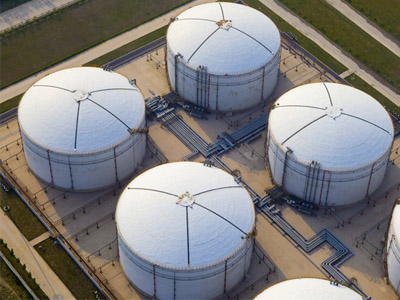Solution

The level measurement is optimal for high and low-level indications, overflow prevention, overfill alarm, water pump protection, and pump control. It can also be used to simply indicate a full or empty state. Level measurement is often undergoing in tanks, silos, or movable containers. Refined digital electronics are making level sensors more reliable, easier to set up, and less cost.
In continuous level measurement in a tank or silo is detected with the torque, replacement fluid volume, magnetic reaction, optical, ultrasonic, and of course the silicon Piezoresistive. The measuring process is converted into an electronic signal. The level signal is either displayed directly on site or incorporated into a process control or management system.
When workers didn't notice that the tank was overflowing may result in a worksite hazard that injured hundreds of people and left many families homeless.
Few things are as ubiquitous in the process control industry as the need to measure the level of process material in a container. Whether that material is water, wastewater, oil, or weak acid solution Weak alkaline liquid, level measurement accuracy can be a determining factor in both profit margins and safety.
How to select the right level measurements
All level measurement systems rely upon certain characteristics of the process material, such as density, corrosion, viscosity, temperature, contact or Non-contact, etc., and each has its pros and cons
Contact or Non-Contact
The characteristics of the process material being measured, such as tank size and shape, the pressure and temperature that the process requires, amount of material agitation, available power, etc., must be taken into account when determining if a contact or noncontact approach is the right option. One must consider whether the material is corrosive or tacky and could possibly cause damage to the measuring device, whether it is volatile and a contact sensor might create a safety hazard, whether the agitation, temperature, or pressure of the process material could affect the reading of or damage the contact sensor, and any other troublesome possibility. On the other hand, non-contact solutions may be outside of the budgetary constraints of the project or not provide the necessary level of precision.
A good way to reduce the number of level measurement options is to categorize them into two broad categories: contact and non-contact. Then you can filter choices by the type of material they can measure.
Floaters, Displacers, Bubblers, and differential pressure transmitter are all contact type hydrostatic measurement devices. Any change in temperature will therefore cause a shift in the liquid’s specific gravity, as will changes in pressure that affect the specific gravity of the vapor over the liquid. Both result in reduced measurement accuracy. Displacers work on the Archimedes principle. A column of solid material (the displacer) is suspended in the vessel. The displacer’s density is always greater than that of the process fluid (it will sink in the process fluid) and it must extend from the lowest level required to at least the highest level to be measured. As the process fluid level rises, the column displaces a volume of fluid equal to the column’s cross-sectional area multiplied by the process fluid level in the displacer. A buoyant force equal to this displaced volume multiplied by the process fluid density pushes upward on the displacer, reducing the force needed to support it against the pull of gravity. The transducer, which is linked to the transmitter, monitors and relates this change in force to level.
Limitation of differential pressure level and displacer measure
Both the differential pressure device and displacer measure a physical variable that requires a value for density to convert the measurement into a level. As long as you use the actual density, the measurement is accurate. If the density assumed is wrong or changes, then the level measurement is inaccurate.
Red optical level measurements
Optoelectronic switches are used in level measurement for point-based limit level detection. They contain an infrared LED and a light receiver within a glass prism. Optoelectronic switches are notable for their compact design and do not feature any moving components. With a measuring tip from borosilicate or quartz glass and robust stainless steel cases, they offer high media compatibility. Red optical level measurements are optimal for beverage industries that require non-contact measurements, river level measurement from a bridge
Radar measurements
Radar measurements are mostly used in distance measurements and outdoor water monitoring,
However, Radar detects not only solid filling materials but also liquids. Even slow-flowing and slow-moving materials are no problem – this enables the radar to be used in mobile tanks, pipes, or ducts. The technology can determine the level of a flow with millimeter precision by means of distance measurement. Depending on how the sensor solution is equipped, the flow rate may also be able to be calculated.
Today’s submersible pressure transducer incorporate a variety of materials and alloys such as 316 stainless steel and HDPE to combat harsh media such as oils, acids, and extremes of temperature and pressure. The emerging measure technologies often use computers to perform calculations. This requires sending signal data in a readable grade format from the sensor to the control or monitoring system. Useful transducer output signal formats for computer automation such as 4-20ma, 0-5v, 0~10v, RS485 digital protocol. Different from the 0-10v output, the 4-20 ma signal is simple to set up and deal with but may have serious noise and interference issues. Improved communication interfaces feed level measurement data into a company’s existing control and/or information system.
Note: LEFOO submersible level pressure transducers are not capable of solutions with frequent changes in concentration density beverage liquids, pastes, bulk solids, liquefied gases, liquefied vapor. LEFOO LFTT2700, LFT3000, LFT3200 are capable of water level measurement applications
Related Products
 English
English  français
français  Deutsch
Deutsch  Español
Español  italiano
italiano  русский
русский  português
português  العربية
العربية  Türkçe
Türkçe  Zulu
Zulu 